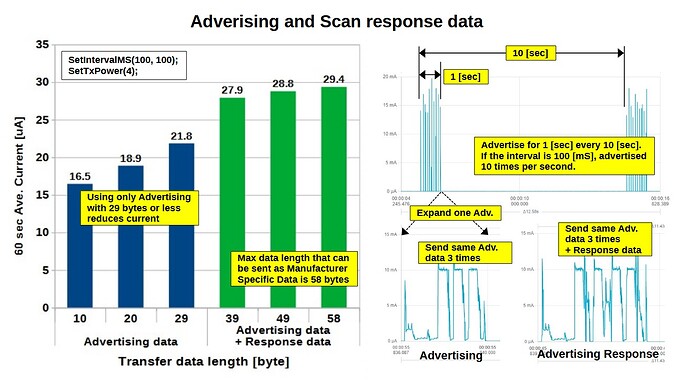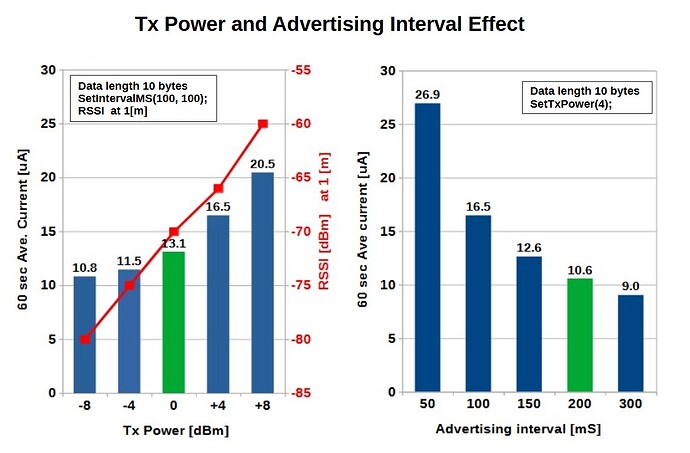This is a continuation of my experiments to reduce the current consumption of Peripheral by using SystemONSleep in a project designed as a data logger that periodically sends small amounts of data to Central.
Previously, in post #31, I reported that the current was reduced to 20uA by putting 8 bytes of data on the Advertising without a connection.
In a subsequent study,
The length of transfer data can be increased to 59 bytes by using Scan Response,
I found that the current can be reduced to 8.5uA (8 bytes data length, 1m distance, and -70dBm RSSI) by optimizing the transmit power, mode and interval of Advertising.
The experimental conditions were
BSP : Seeed nRF52 Boards 1.1.1
Board : Seeed nRF52 Boards / Seeed XIAO nRF52840 Sense
System ON Sleep : Using RTOS delay()
Task : Send 10 ~ 58 data every 10 seconds
Measurement : 3.00V applied from pppk2 to 3V3 pin of XIAO
Current reduction measure
Disable the blue LED used for BLE
Set on-chip regulator to DCDC mode
Set on-board Flash to OFF
Allow Scan only when necessary
Optimize for the application and environment
user data length 8 bytes
Tx Power 0 dBm(RSSI -70dBm)
Advertising Interval 200mS
Throughout the discussion, hobbya has given me tips and advice. I appreciate it.
‘Xiao ble scan response discussion’‘Xiao ble scan response discussion’
The sketches used in the experiment can be found here.
nRF52_XIAO_AdvRes.zip (5.2 KB)

